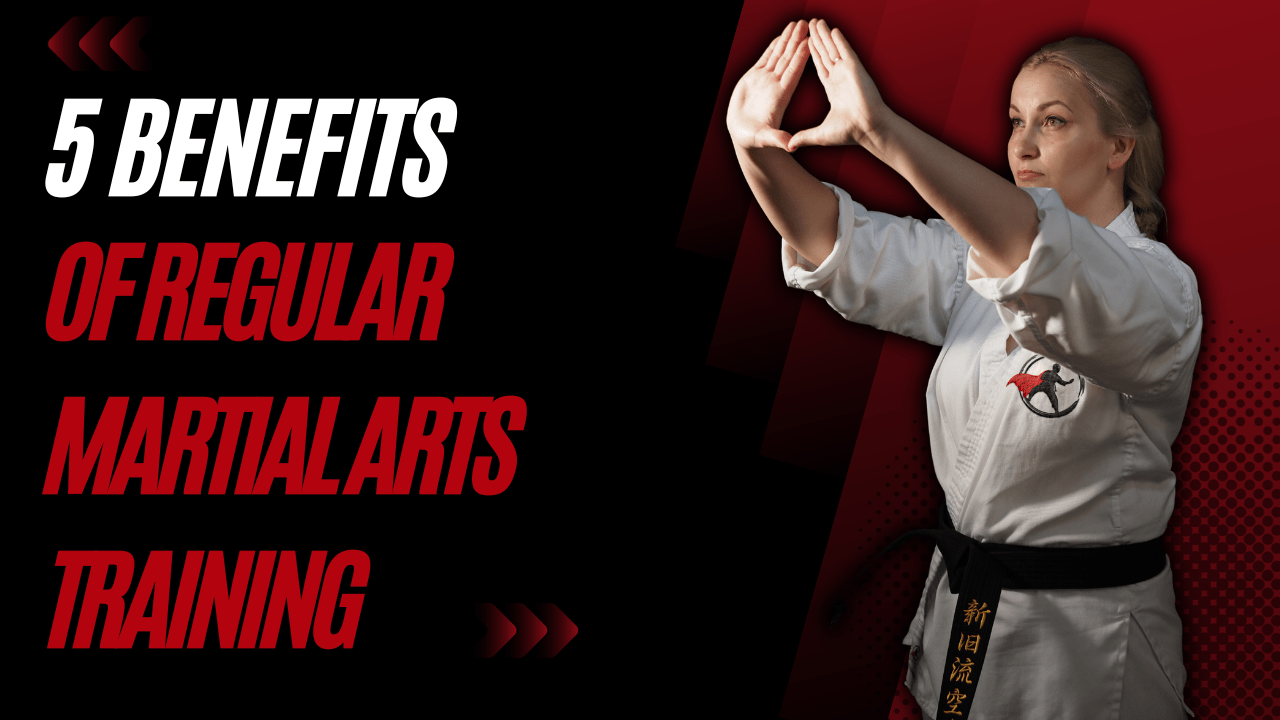Are you experiencing anxiety or depression and looking to find a pathway to improved mental and physical health? Regular martial arts training benefits could be the answer you’re searching for. This approach combines exercise, which has been found to help with depression and anxiety, with a community that can be there for support.
Not to mention, martial arts training can help you lose weight, manage your heart rate and imbibe orderly discipline via their belt ranking system. Dive into this socio-physical world where you build self-defence skills, engage physically and mentally, and reduce stress in high-intensity martial arts classes. Let’s punch, kick and throw our worries away together!
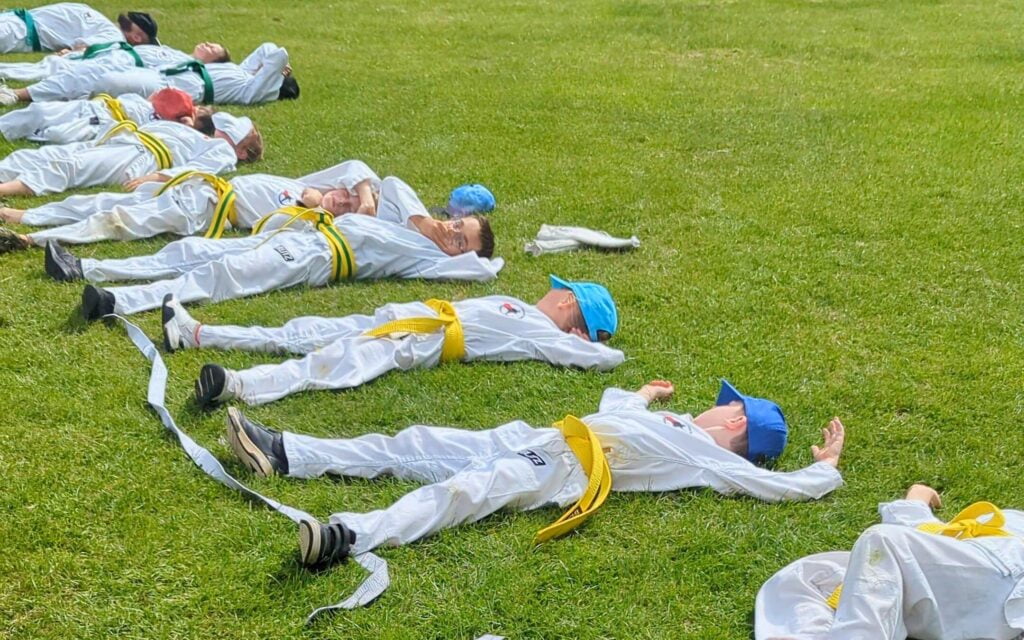
1) Martial Arts Helps with Anxiety and Depression
Regular martial arts training benefits extend beyond the physical realm into the psychological aspects of well-being. In this fast-paced world, martial arts helps with anxiety and depression, offering solace to those struggling with these mental health conditions.
Connection between Martial Arts and Mental Health
Investing time to learn martial arts is like entering a sanctuary where the outside world no longer disturbs you. Every move and strike enables you to tune into your mind and body, helping you establish a stronger connection with yourself. When stepping out of a training session, many martial artists feel a sense of calm and serenity. This motoric meditation practice can significantly improve your mental health.
How Regular Training Reduces Stress
The discipline and focus required during martial arts training naturally distract the mind from daily stressors, resulting in notable stress reduction. A 2018 study in the Journal of Physiological Anthropology asserts that regular practising of martial arts not only reduces stress but also helps in coping mechanisms, which in turn manages depression and anxiety better.
Moreover, training releases endorphins – the body’s natural painkillers and mood elevators, which lead to improved physical as well as mental health.
Benefits of Martial Arts for Depression and Anxiety
Underneath the umbrella term ‘regular martial arts training benefits,’ lies the invaluable advantage of improved mental health. Through continuous training, participants in martial arts can significantly reduce their symptoms of anxiety and depression.
- Decreased Symptoms: Many martial artists experience reductions in their negative thoughts, feelings of hopelessness, or excessive worry characteristic of depression and anxiety after training sessions.
- Improved Mood: The endorphin kick helps to lift moods post-workout, while the achievement of gradually mastering different techniques imparts a sense of accomplishment.
- Greater Self-Esteem: Martial arts classes help individuals build their confidence. Every belt rank achieved, and every technique mastered, brings with it enhanced self-esteem, which is a potent tripper against psychological disorders.
In essence, the realm of martial arts offers a mental fortress against the sieges of anxiety and depression, making it a worthwhile endeavour for those grappling with these conditions.

2) Improving Physical Health through Martial Arts
Engaging in martial arts can drastically improve one’s physical health, and many adolescents enjoy this form of exercise because it’s dynamic and exciting. From Karate to Taekwondo, martial arts offer a distinct form of high-intensity workout that can assist in bettering cardiovascular health and maintaining a fit body weight.
High-intensity Exercise and Heart Rate
One of the regular martial arts training benefits is the impact on the heart rate during intense physical exertion. This high-intensity workout boosts your heart rate significantly and aids in strengthening the heart muscle over time. High-intensity workouts are known to improve cardiovascular health, and training in martial arts is an enjoyable way to incorporate such exercises into your routine.
A typical session of martial arts training may include various activities such as:
- Punching and kicking pads or bags
- Practising sequences or “forms”
- Sparring or simulated fighting scenarios
- Cardio-focused warmups and cooldowns.
Improved Cardiovascular Health through Training
Many participants in martial arts witness significant improvement in their cardiovascular health. The combination of intense bursts of physical activity, punctuated by moments of lower-intensity movements, can lead to improved cardiovascular endurance and overall heart health.
Key health benefits include:
- Decreased resting heart rate: As you train regularly, your resting heart rate will start to decrease, indicating improved heart health.
- Increased oxygen uptake: The high-intensity nature of martial arts helps improve your body’s ability to consume and utilize oxygen, increasing stamina.
- Reduced blood pressure: Regularly elevated heart rate during martial arts training can help lower blood pressure over time.
Weight Loss Benefits of Martial Arts
As a form of high-intensity interval training (HIIT), practising martial arts can aid in weight management and promote lean muscle development. The vigorous routines undertaken by martial artists in a typical class facilitate burning a significant number of calories. Combined with a balanced diet, martial arts provide an effective strategy to lose weight and maintain physical fitness.
Here are three primary ways martial arts can aid in weight loss:
- Burns calories: As a high-intensity workout, martial arts can burn a considerable amount of calories in a short period.
- Promotes muscle growth: Martial arts training involves various muscle groups, promoting lean muscle growth and subsequently increasing your metabolic rate.
- Boosts metabolism: High-intensity workouts, like those experienced in martial arts, can lead to an increase in your metabolic rate for hours after the exercise has ended, leading to more calories being burned even at rest.
Encouraging adolescents to learn martial arts offers them a fun, engaging way to engage in regular physical activity. It helps in their growth physically and mentally – benefiting them on the journey of life, fostering a sense of discipline, and cultivating lifelong physical fitness habits.
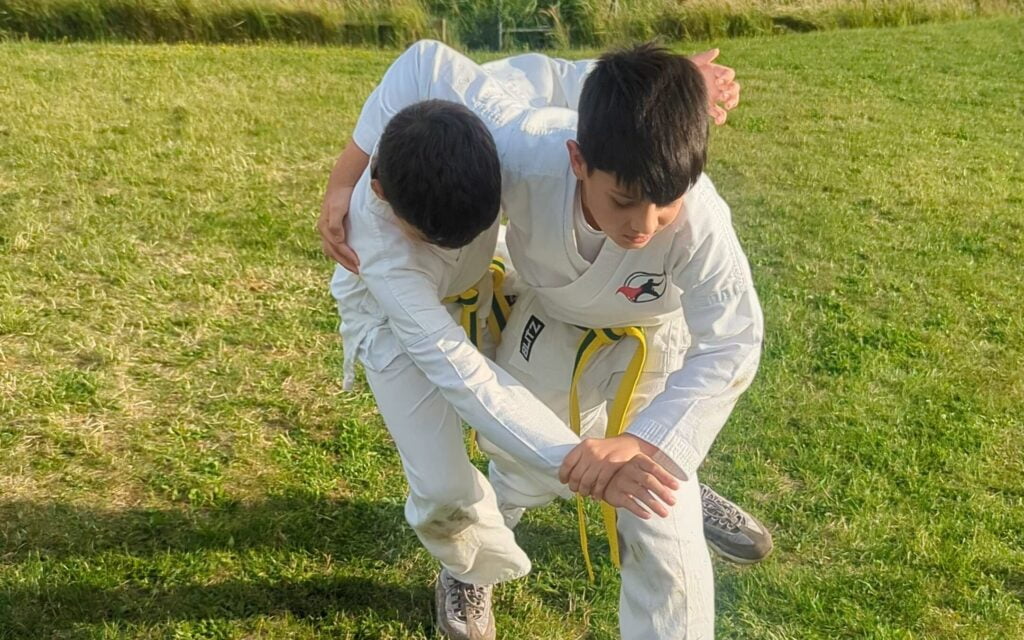
3) Learning Self-Defense Skills with Martial Arts
Martial arts are not just about punching, kicking, or wrestling—it’s also about acquiring valuable defence skills that you can use in real-life situations.
Practical Aspects of Martial Arts Training
As a participant in martial arts classes, you get the opportunity to learn martial arts techniques ranging from punches, kicks, and blocks, to grappling and other self-defense tactics. Regular martial arts training benefits you by equipping you with techniques that you can use to protect yourself, no matter your size or strength.
The martial arts training also encourages you to be physically and mentally alert at all times, as part of the training involves responding effectively to sudden attacks from opponents. This helps you to hone your reflexes and increases your overall awareness, which is a crucial aspect of self-defence.
Developing Defense Skills through Belt Ranks
In martial arts, belt ranks are more than just a coloured piece of cloth around your waist—they signify your skill level and expertise. As you progress through various belt ranks, you learn and master more complex defensive techniques. This progression not only keeps the learning process challenging and interesting but also ensures that you are constantly improving and refining your self-defence skills.
Confidence Gained from Self-Defense Knowledge
Knowing how to defend oneself can give you a sense of empowerment that extends beyond the martial arts studio. This newfound confidence can positively affect other areas of your life, giving you the courage to take on challenges that you previously might have shied away from.
It’s important to remember that martial arts is not about promoting violence—it’s about promoting peace and harmony. By practising martial arts and learning self-defence skills, you’re not learning how to pick fights, but how to avoid them and only engage when absolutely necessary. In essence, you’re learning how to be more in control of situations and, more importantly, your life.

4) The Social Benefits of Joining Martial Arts Classes
One of the most notable regular martial arts training benefits is the social aspect it brings to participants. Joining martial arts classes extends far beyond the physical realm – it fosters a strong sense of community among its members, making it a perfect avenue to improve your social skills.
Creating a Sense of Community
At the heart of every martial arts class is the essential concept of unity. Through shared experiences in rigorous training and high-intensity workouts, participants in martial arts naturally form tight-knit bonds. This strong sense of community is more than just camaraderie; it is a support system that stands by every martial artist, providing an accommodating environment for everyone to feel at ease.
Opportunities for Social Interaction in Classes
Practising martial arts offers ample instances of social interaction. It allows students to bond over common interests, shared experiences, and a collective goal of improving physically and mentally during each session. Open discussions with peers add more perspective to learning and the peer-to-peer coaching atmosphere encourages a wealth of interactive learning experiences. Here’s a glimpse of what those interactions look like:
| Martial Arts Class Interactions | Benefit |
|---|---|
| Partner drills | Developing teamwork and cooperation skills |
| Class-wide discussions | Promoting open communication and dialogue |
| Group warm-ups and cooldowns | Fostering unity and camaraderie |
| Mentoring junior members | Instilling a sense of leadership and responsibility |
Lessons in Respect and Discipline
The traditions of martial arts aren’t merely physical. They carry lessons that are pivotal to personal development. This training inculcates values of respect for oneself, others, and the art itself. Every bow, every stance, and each instruction adhered to serves as a reminder of maintaining discipline and respecting the belt ranks. The discipline learned in martial arts classes often percolates into participants’ everyday lives, aiding to reduce stress and manage depression and anxiety.
Martial arts help with anxiety and depression, not solely through physical exertion or the release of endorphins, but also by fostering a sense of belonging, improving social interactions, and building a respectfully disciplined outlook towards life. The benefits of martial arts are holistic, extending beyond fitness and self-defence skills into shaping individuals who are resilient, respectful, and socially adept.
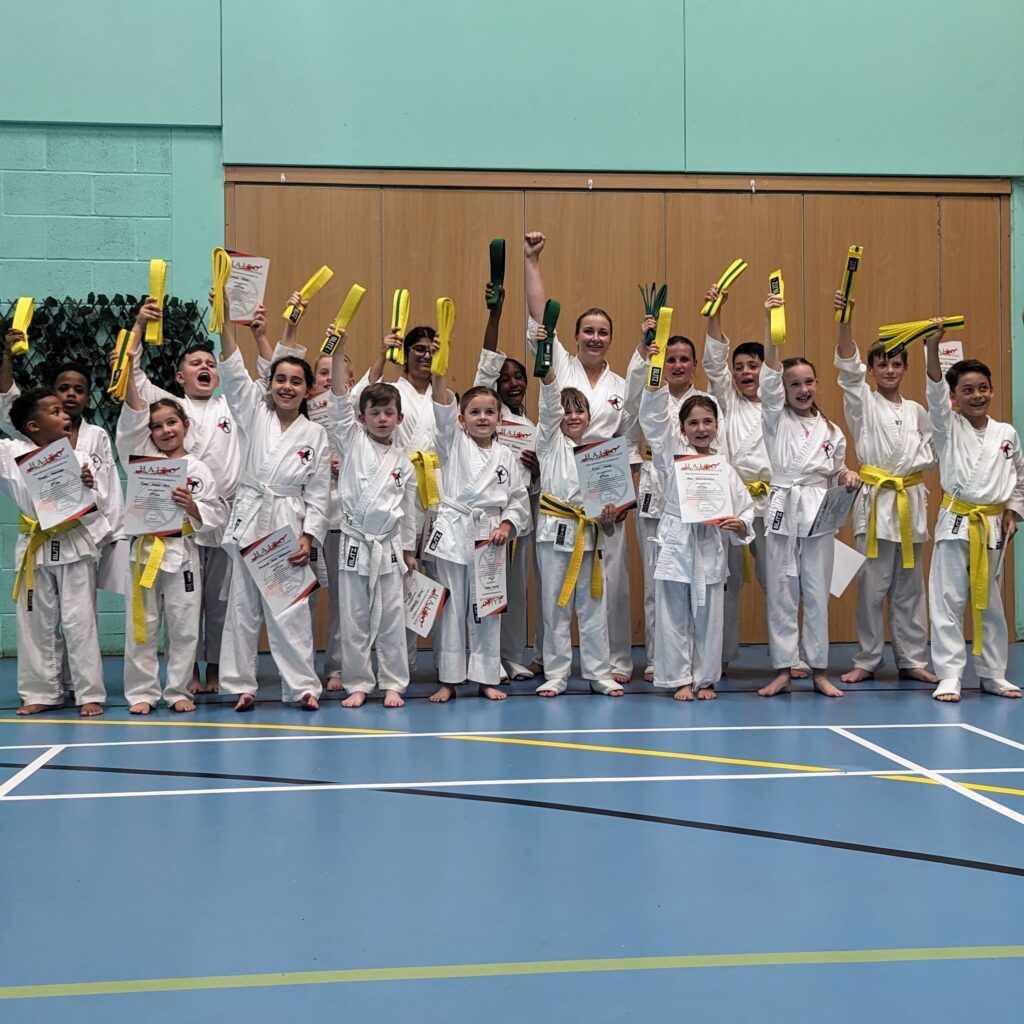
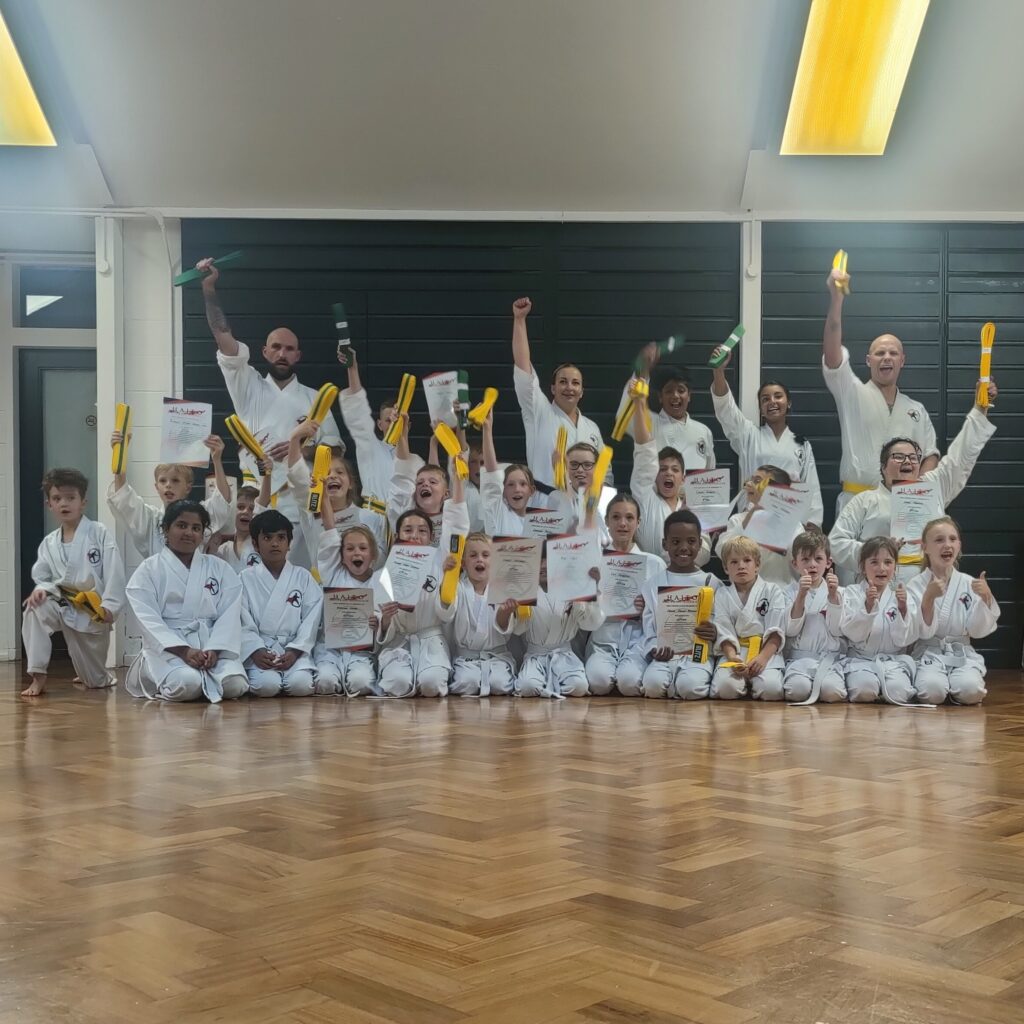
5) How Martial Arts Enhances Personal Growth
Martial arts is more than just a sequence of high-intensity physical exercises; it’s a medium for cultivating inner growth—physically and mentally. The disciplined approach of regular martial arts training benefits not only your body but has a profound impact on personal development. Let’s have a look at how martial arts aids such progression.
Development of Physical and Mental Resilience
Martial arts are known for their rigorous training regimes, challenging both your body and mind. Practising regularly can significantly improve physical fitness, evident in the toned muscles and increased stamina of many martial artists. However, it doesn’t just stop there.
- Through overcoming physical challenges and constantly pushing past their limits, participants in martial arts also get to strengthen their mental fortitude. The training is designed to test one’s endurance and resilience, often leading to improvements in problem-solving and decision-making skills, much-needed traits in stressful real-world situations.
- In martial arts, you seldom win all fights, your opponents might be stronger, faster, or more experienced. The key is to never give up. In doing so, martial arts participants develop a gritty determination and resilience that transcends the training ground and spills over into daily life.
Using Martial Arts for Personal Development
Martial arts training can be leveraged for personal development due to its holistic nature encompassing physical, mental, and spiritual aspects. This symbiotic relation means that improvements in martial proficiency often lead to enhanced personal qualities. Here’s how:
- Practising martial arts progressively increases the difficulty level; conquering each level instils a sense of accomplishment. This progression marked by belt ranks serves to improve practitioners’ self-esteem and self-confidence.
- Martial arts involve disciplines that need consistent effort and concentration. This teaches one to be patient, attentive, and disciplined. These qualities prove beneficial in academic, professional, and personal scenarios, leading to overall personal development.
The Impact of Regular Training on Life Skills
Maintaining regularity and consistency in martial arts training helps develop critical life skills that benefit practitioners in the long run.
- The focus required during martial arts training enhances concentration skills. Constantly being alert and aware during practice helps boost cognitive alertness not just in martial arts classes but in other areas of life too.
- Martial arts promotes discipline and respect. The orderly rituals, honouring the dojo, and showing respect to teachers and peers, all contribute to character development. These life skills, once learned, are likely to be applied in everyday behaviour and interactions.

Conclusion
Investing your time in regular martial arts training benefits you both physically and mentally, from reducing stress to improving cardiovascular health. If you ever feel a sense of anxiety or are looking to lose weight, don’t discount the power of joining martial arts classes. Always remember, martial arts isn’t just about earning belt ranks and defence skills, but it’s a journey of personal growth, fostering resilience—so take the first step, enroll in a class, and embrace the many health benefits this high-intensity exercise offers.

